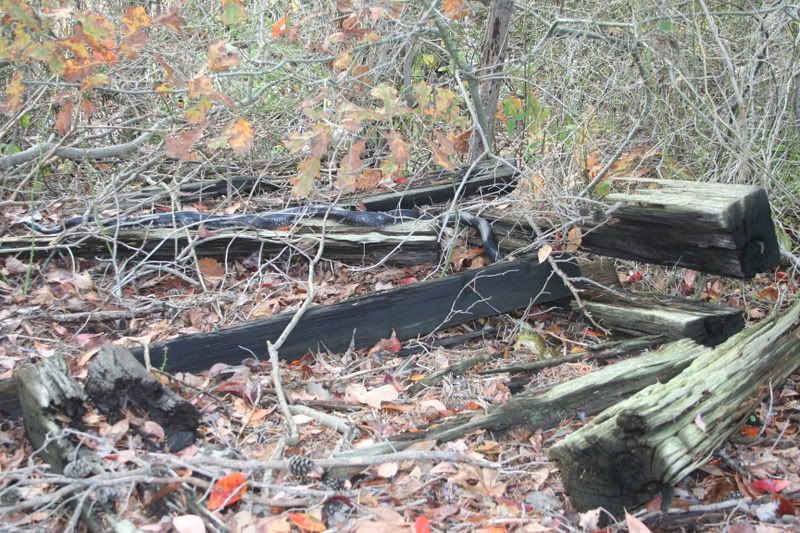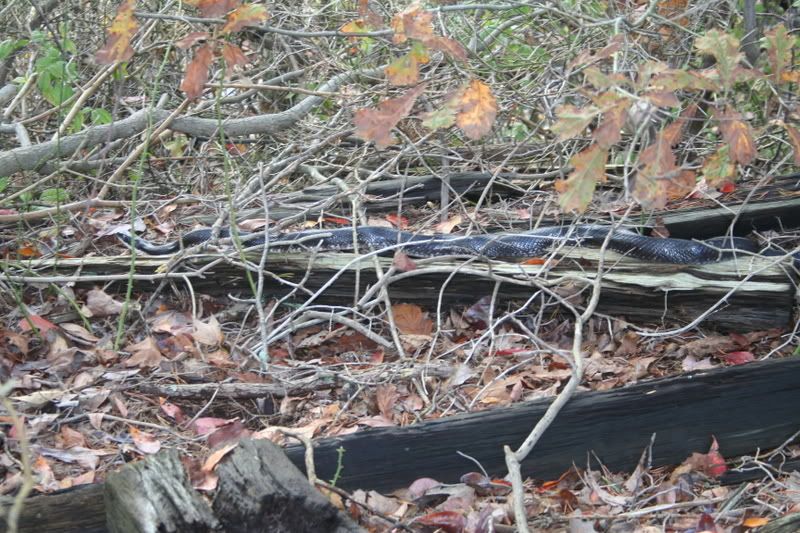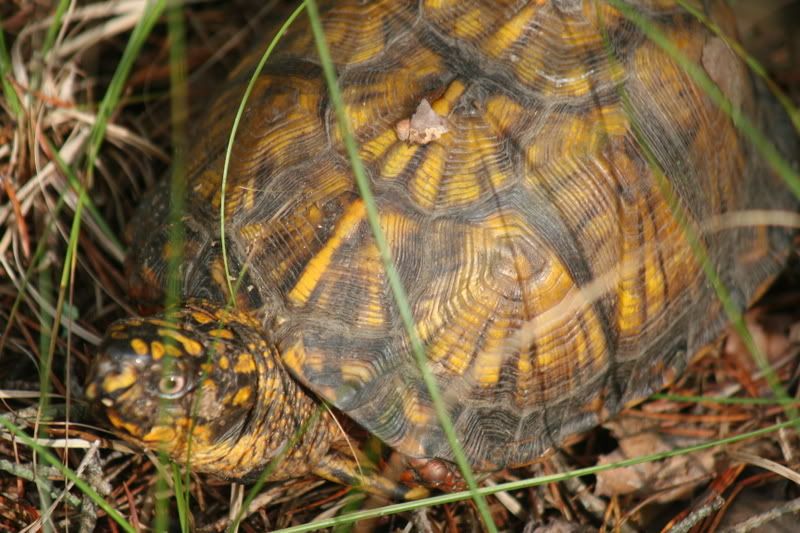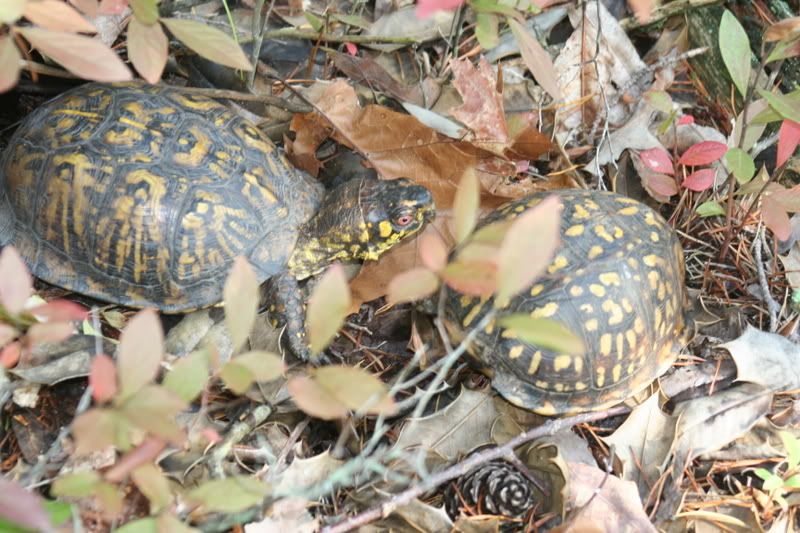Not to beat a dead horse, but I've found plenty of herps during "unlikely" times of the year before. I've seen a number of turtles swimming below the ice (all painted), found turtles in mid january (again, painted), snakes in late november, frogs ALL year long . . .
snakehunter: pretty much all (semi)aquatic turtles will burrow in mud (underwater) for the winter. most of them have specialized structures called bursae in their mouth and cloaca that allow some oxygen absorption underwater. given that colder water tends to be more highly oxygenated, and that the slowed metabolism of an ectotherm cooled below 55 degrees requires very little oxygen to sustain life - the little amount they're able to "breathe" underwater is more than enough to remain submerged for a few months. that PRETTY much covers every NJ species except box turtles (maybe woods) - who won't burrow underwater necessarily, but still need a nice moist spot underground to hibernate in (dessication is probably #2 on the list of why some turtles die during hibernation). surprisingly enough, they don't always burrow very far under, either - i've seen box turtles hibernate no more than a few inches below the surface.
as for seeing turtles (or any herps, for that matter) when its "too cold to be spring", you have to take into account that the human concept of "temperature" is a very relative and generalized one. we look at the weather channel - see that its 55 degrees - walk outside and say: "yep - feels like 55 to me!". without me getting too stupid with this - just be conscious of the fact that even though the average air temp in the area may be 55 - that varies ALOT within little microlocalities.
example: on a sunny 55 degree day - the air temperature can be 55 in partial sun - 35 in a densely shaded area - and where the sun has been beating all day it can be 65 or more. to go even further - the inch or two blanket of air covering a sun-drenched spot can (locally) get much hotter. in some places with a drastic temperature gradient - you can feel the local winds and breezes the convection creates even when its not windy anywhere else (crossley in the spring or fall is an excellent example).
early last spring i remember being surprised to be standing on a bridge at the great swamp: on one side of the bridge the marsh was frozen. on the other side it was not only liquid, but had clusters of basking painted turtles on every bit of debris that broke the water's surface. it was in the low 30's that day (and i froze my butt off).
What I should have realized right off the bat - when you're thinking in terms of a small black turtle (or snake, etc) sitting in the sun for 3 hours straight - you may be freezing at 35 degrees - but he's feeling a mild spring day.
-Bob
 , best of luck to him, anyone else seen any herps as of late
, best of luck to him, anyone else seen any herps as of late , best of luck to him, anyone else seen any herps as of late
, best of luck to him, anyone else seen any herps as of late





